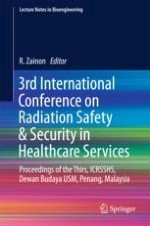2018 | Buch
3rd International Conference on Radiation Safety & Security in Healthcare Services
Proceedings of the Thirs, ICRSSHS, Dewan Budaya USM, Penang, Malaysia
herausgegeben von: Dr. R Zainon
Verlag: Springer Singapore
Buchreihe : Lecture Notes in Bioengineering
